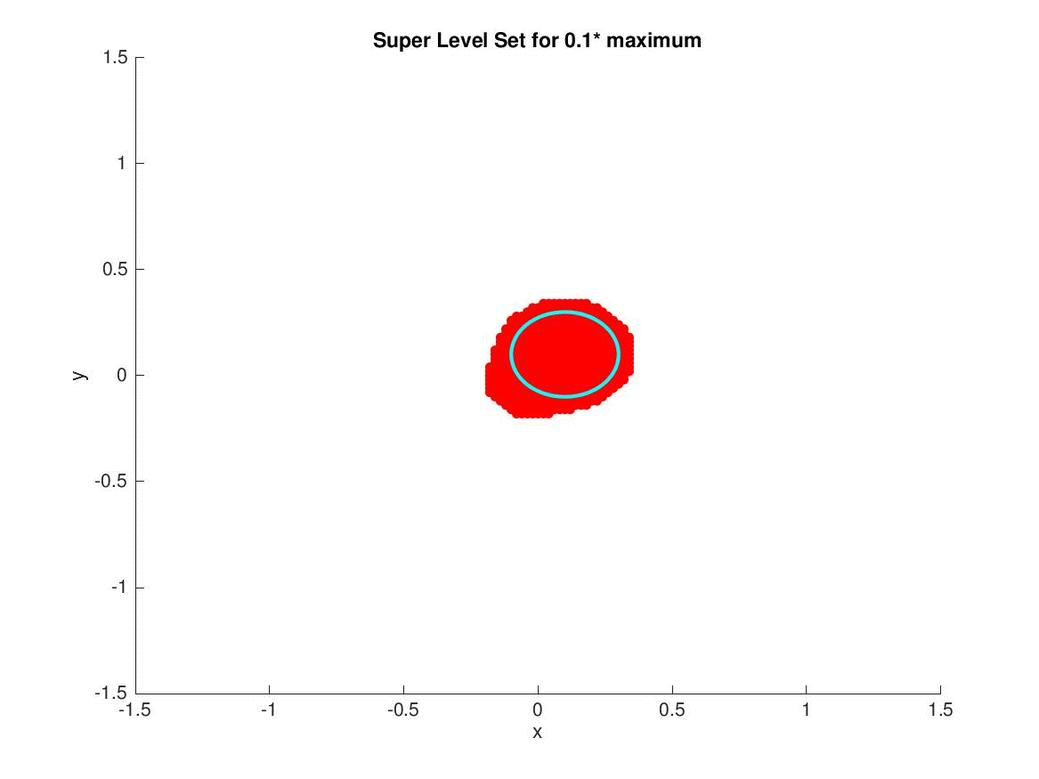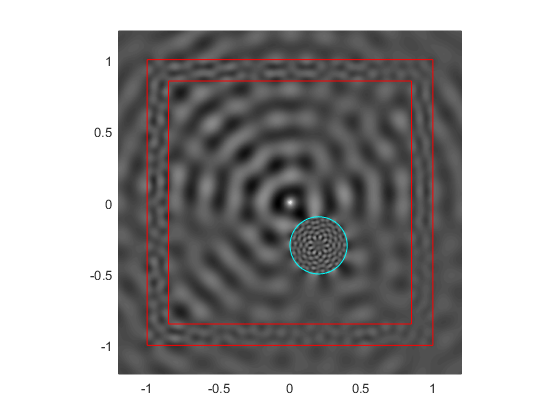Radar Analysis
Summary

This project centers around using inverse problem methods to analyze the through-the-wall imaging problem. I have been working with various applications of the linear sampling method to determine if it is possible
to locate and analyze the object from the scattered data. In particular, the through-the-wall setting is not fully understood, because the set where the conductivity matches the background is not connected, and I have been looking
to see how close we can get. As of late, I have been ignoring the through-the-wall problem, and been looking at the possibility of doing something beyond the linear sampling method to recover the properties of the inhomogeneous object.
Next Steps

There are a couple different ways to go forward with this project from here. It would be interesting to see how adding the walls back into the system will affect the reconstruction. In addition, the results vary significantly as
the frequency of the impeding wave changes, and it would be interesting to look into what these effects are and how they can be used advantageously in doing these constructions. Finally, the project started by trying to look at moving objects and how
that affects the scattered field, as well as the reconstruction technique.
References
- Charnley, M. and A. Wood. "A linear sampling model for through-the-wall radar detection." 2017. DOI: 10.1016/j.jcp.2017.06.035.
- Charnley, M. and A. Wood. "Through-the-wall radar detection analysis via numerical modeling of Maxwell's equations." 2016. DOI: 10.1016/j.jcp.2016.01.039.
 This project centers around using inverse problem methods to analyze the through-the-wall imaging problem. I have been working with various applications of the linear sampling method to determine if it is possible
to locate and analyze the object from the scattered data. In particular, the through-the-wall setting is not fully understood, because the set where the conductivity matches the background is not connected, and I have been looking
to see how close we can get. As of late, I have been ignoring the through-the-wall problem, and been looking at the possibility of doing something beyond the linear sampling method to recover the properties of the inhomogeneous object.
This project centers around using inverse problem methods to analyze the through-the-wall imaging problem. I have been working with various applications of the linear sampling method to determine if it is possible
to locate and analyze the object from the scattered data. In particular, the through-the-wall setting is not fully understood, because the set where the conductivity matches the background is not connected, and I have been looking
to see how close we can get. As of late, I have been ignoring the through-the-wall problem, and been looking at the possibility of doing something beyond the linear sampling method to recover the properties of the inhomogeneous object.
 There are a couple different ways to go forward with this project from here. It would be interesting to see how adding the walls back into the system will affect the reconstruction. In addition, the results vary significantly as
the frequency of the impeding wave changes, and it would be interesting to look into what these effects are and how they can be used advantageously in doing these constructions. Finally, the project started by trying to look at moving objects and how
that affects the scattered field, as well as the reconstruction technique.
There are a couple different ways to go forward with this project from here. It would be interesting to see how adding the walls back into the system will affect the reconstruction. In addition, the results vary significantly as
the frequency of the impeding wave changes, and it would be interesting to look into what these effects are and how they can be used advantageously in doing these constructions. Finally, the project started by trying to look at moving objects and how
that affects the scattered field, as well as the reconstruction technique.